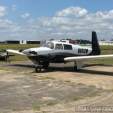Efficiency!
-
Members Online
- Deb
- febeg91356
- redbaron1982
- Texas Mooney
- SoccerCA
- GMBrown
- TravelingIA98
- Jose Jo
- Stealth Mooney
- JB2000
- Danb
- BillyT0020
- MikeOH
- Marc_B
- Planegary
- Ragsf15e
- eman1200
- toto
- Igor_U
- Jim Peace
- Tmooney
- ZMERC
- AKEllsworth
- FLYFST
- 0TreeLemur
- RoundTwo
- Matthew P
- takair
- TCC
- Utah20Gflyer
- ew232
- Parker_Woodruff
- J-Bear Aviation
- Joe Linnebur


Recommended Posts
Join the conversation
You can post now and register later. If you have an account, sign in now to post with your account.